Many investors succumb to home country bias and narrative-based short-term investing strategies when they ought to be constructing a globally diversified portfolio that is built for long-term success.
Fortunately, for our latest “Investing Legends” interview, we have Meb Faber in the house to discuss all things related to global asset allocation.
Meb’s one of my favourite people in this space because he’s a contrarian quant that samurai slices through the thick layer of bullshit beliefs that most investors fall prey to in what is generally a very conservative industry.

Home country bias?
He’s not having any of that.
Expensive high P/E market-cap weighted stocks that the masses buy in droves.
Nope.

I could go on and on but I’d rather turn things over to Meb so he can explain things better.
This is a transcribed conversation we had which you can watch/listen to below:
Global Asset Allocation With Meb Faber

Hey guys! Here is the part where I mention I’m a travel content creator! This “Investing Legends” interview is entirely for entertainment purposes only. There could be considerable errors in the data I gathered. This is not financial advice. Do your own due diligence and research. Consult with a financial advisor.

These asset allocation ideas and model portfolios presented herein are purely for entertainment purposes only. This is NOT investment advice. These models are hypothetical and are intended to provide general information about potential ways to organize a portfolio based on theoretical scenarios and assumptions. They do not take into account the investment objectives, financial situation/goals, risk tolerance and/or specific needs of any particular individual.
Portfolio Diversification With Meb Faber

Personal Finance Education in the US

Because it’s on my mind these days, we often talk a lot about the lack of personal finance education in the United States.
We don’t teach it in high school and we don’t certainly don’t teach it in middle or elementary school.
And we should.
That’s getting better. So it used to be around 10 percent of high schools would teach it, now it’s it’s drifting up to 30% to 40%.
It’s still less than half and that’s unfortunate because, what does everyone use on a daily basis in a practical level more than anything?
That’s money.
And it doesn’t have to be boring personal finance.
It can be just this concept of freedom and wealth and budgeting.
Investing Books Recommended By Meb Faber

We’ve done a couple posts over the years and I’ll tell you about two.
One was called “The #1 Investing Book“.
I reached out to all of my kind of contemporaries and friends and got over a thousand responses.
And I said, if you had to just gift someone one investing book to learn about investing, what would it be? And I got back a gazillion answers.
But I kind of narrowed it down to the top ten; so i’ll send you that list.
Secondly, is that I did it a little bit different. As I said, what if someone wants to go from just okay, instead of just learning how to invest with just one book, I actually want to learn the craft of investing.
That’s another post called “Learning How To Invest” and this one we voted on like five different. categories.
And I’ll tell you what they are.
Personal finance.
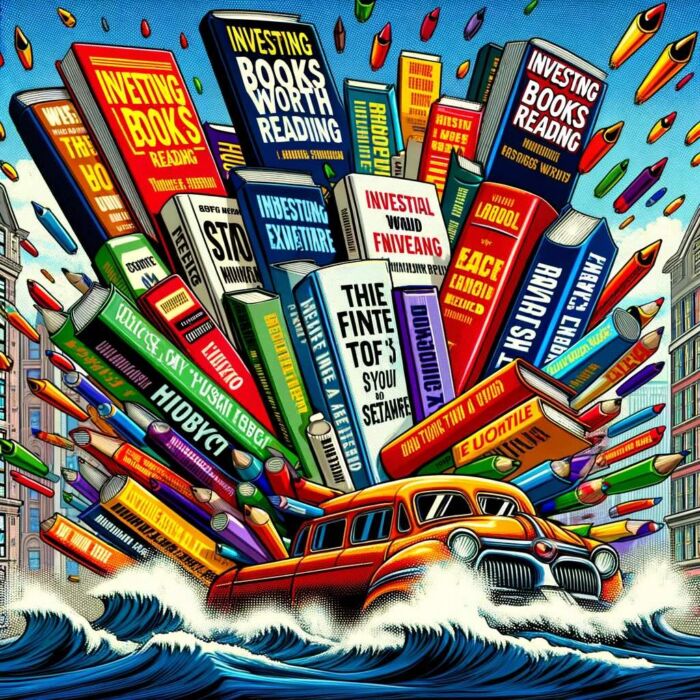
The winner was “The Millionaire Next Door” by Thomas J Stanley.
For stocks the the pick was “The Little Book Of Common Sense Investing” by John C Bogle.
In terms of Asset Allocation they picked my book “Global Asset Allocation” but since that’s a biased poll, I found a non-Meb book which was “The Intelligent Asset Allocator” by William J. Bernstein.
For market history they picked “Fooled By Randomness” by Nassim Taleb.
For investing 2.0 (these others are all intro level books) you’ll want to check out “What Works On Wall Street” by Jim O’Shaughnessy.
In terms of covering behavioral investing “Thinking, Fast And Slow” by Daniel Kahneman.
Finally, the old “Market Wizards” profiles by Jack Schwager.
That’s a good tuition.
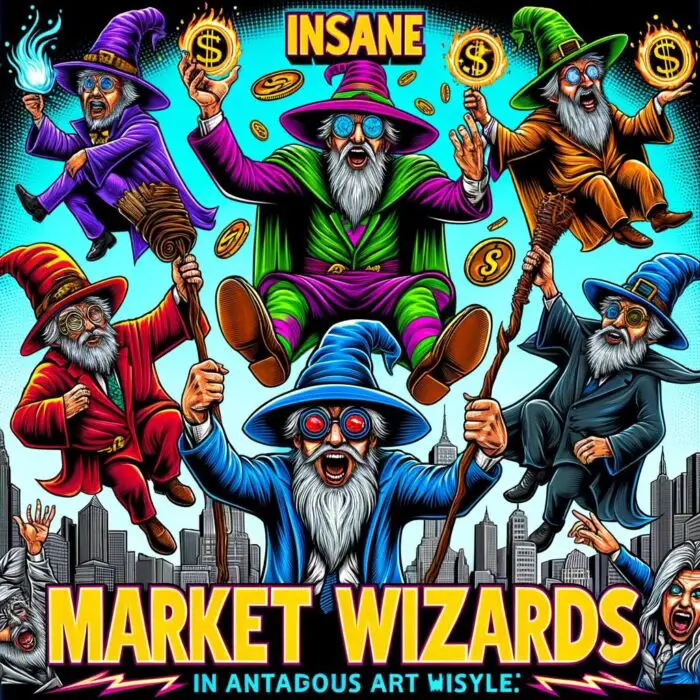
Idea Farm Podcast Playlist (Best Of The Year)
Now the good news is that there may be people out there saying, “You know what guys, I don’t want to do this. I don’t want to read all these books.”
Let’s make things easier and we did.
We started curating back in 2017 the top investing podcasts.

Now some of these are wonky and some of them are “not intro level” but you could go to Spotify and check out “The Idea Farm Playlist” for 2017, 2018, 2019, 2020, 2021 now on to 2022,
There’s literally hundreds of hours of top content from the world’s greatest investors.
That’ll get you started.

Meb Faber’s Investing Mentors
The second question was who were some mentors?
I was actually supposed to talk to one tonight.
I’ve never met him because he’s based in Singapore.
Jim Rogers.
His books I think were pretty influential when i was younger as a college age investor.

Especially “Investment Biker” and “Adventure Capitalist: The Ultimate Road Trip“, discusses traveling all over the world and not investing just within your own borders, is a really formative book.
Like I had mentioned previously Schwager’s “Market Wizards” books left an impression that there are lots of different personalities and styles out there.
But most important of all, is that there are lots of different ways to make money in the markets.

How Meb Faber’s Investing Views Have Changed Over The Years
Wow! That’s probably an hour-long conversation but we can certainly dive in.
I think like many investors (particularly the younger set such as “the Robin Hood crew” these past few years) are finding their footing.
You’re finding out exactly what works for you.

Unless you’re Warren Buffett who was inoculated at a young age towards value investing for a lot of people it’s merely just trial and error.
You have to go through certain experiences (such as they touch the stove a few times) before they learn what fits for them and what not to do.
That was certainly true from my experience and for most others.
I really struggled with and did not enjoy the discretionary and subjective investing process.

Quant Investor: Objective Rules Based Investing
I gravitated at an early age in my 20s towards objective rules-based quantitative strategies.
Now that doesn’t mean it has to be overly complicated.
It could be very simple portfolio such as a 50-50 stocks and bonds rebalanced once a year.
That’s rules-based and quantitative.

I tweeted about this the other day and where I mentioned discretionary investing for me is a total nightmare.
I would go crazy emotionally psychologically trying to figure out everything with all the news flow and volatile markets along with just everything else.
Investor Time Horizons and Low Costs

As far as what’s changed for me in the last decade there’s been a couple of things in particular.
The big one (which you’ve probably heard me say before) is from Kenneth French who is one of the most famous professors in finance.
His data set is free online for the people that want to play around with that.
He had a tweet the other day which I’m summarizing here: “It’s insane for people to try to draw conclusions from three, five or even ten years of asset class data or any particular strategy returns.”
Overall, meaning that if you’re looking at the short run of how investments perform that’s totally foolish.
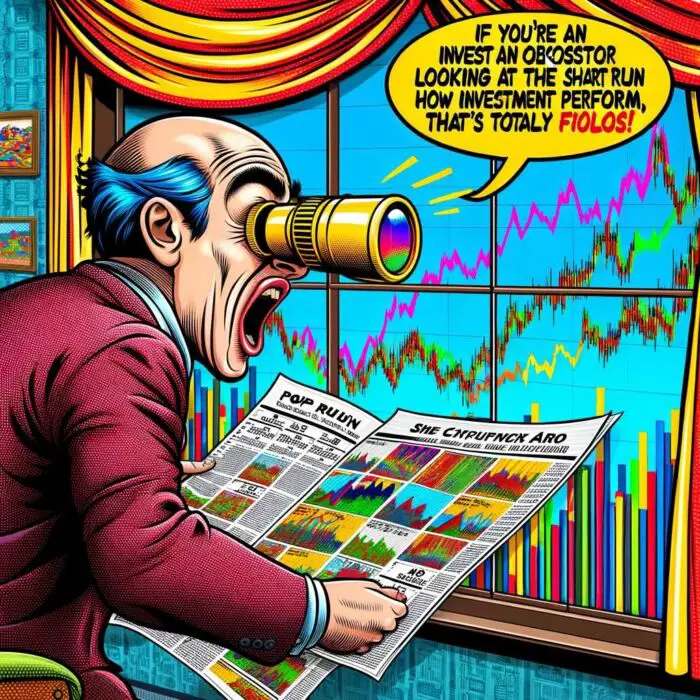
Now what do most people look at normally?
In the past I would have said something like one to two or possibly even three years.
But in this modern age it’s now only one to three months.
Which is nuts!
My time horizon is spread out even more than 10 years now.
This aligns with almost zero other investors including actual behaviors of individuals and institutions.
That’s a big one.
Thus, you need to look at much longer time horizons and people don’t like to hear that.
They want certainty; they want it now.
This is obvious and and it’s not a unique insight as people have been talking about this for 50 plus years.
But I think it’s a critical insight and one that gets overlooked.
Costs matter.
And costs are not just exclusively expense ratio.
It’s everything involved with an investment a strategy including taxes.
People hate paying taxes but I don’t necessarily think they optimize as much as they should.
Those are two big ones.
Long time horizons.
Plus the impact of low costs.
Now the good news is there’s never been a better time in history to be an investor than right now.
For instance, the ability to invest globally for nearly zero cost.

But it’s also never been a better time in history to just as easily light your money on fire.
The casino is always open which makes it hard as well for investors.
Cambria Funds
We now have 12 funds and over 125,000 investors which is crazy to think about.
When we launch funds in a world of 10,000 plus funds out there we asked the following question: “Why does the world need any more funds right now?”
How has the investment landscape not been totally wallpapered over at least 10 times?

Thus, we try to launch funds that don’t exist.
Others are like “wow” there’s things that don’t exist?
But there’s actually quite a few ideas that we think we could create better or cheaper.

Cambria Global Asset Allocation (GAA ETF)
The case of the fund you just mentioned (Cambria Global Asset Allocation – GAA ETF) we figured by definition for a buy and hold investing strategy you don’t do anything other than to literally buy and hold.
So I pondered, why isn’t there a low-cost global asset allocation ETF?
The asset allocations category, despite fees coming down both in the US and globally, is still really high cost which I found crazy.
At the time we launched this, it was the first ETF that had no management fees.
We charged nothing on it.
It’s a fund of funds.
Some of the funds are ours but our goal is just to break even on this fund.

I don’t care if we ever make money on it.
And I’m trying to think of a nice way to say it, but we basically wanted it to be a giant middle finger to the entire industry.
Hey! Look we’re going to do this for free.
Can you beat this?
Probably not.
And so the good news is that we think the fund has done well.
We believe it has had great performance.
But there’s some interesting hidden pieces of information that the average investor may miss.
One that we talk a lot about obviously is the ETF structure and tax efficiency.
This fund is meant to be a global asset allocation to replicate if you just went out and bought the entire world of public assets that are available.
In a nutshell, it’s global stocks, global bonds and global real assets.
To expand, stuff like real estate, commodities and TIPs.

Additionally, it has tilts towards value and momentum.
But the whole point of this fund is that it’s low cost but in addition there’s a hidden yield.

Securities Lending
For public funds you can lend securities; it’s called securities lending.
It’s a very time-honored basic simple sort of strategy where it could add in this case usually 0.1 to 0.2 percent per year in income and returns.
Some say that’s not that significant.
Well, it is certainly significant when you consider that these these funds are low cost already.
We have one fund that had one or two percentage points of returns from the short lending a year ago.
And this kind of stuff goes through waves that are in and out.
Sometimes it’s higher; sometimes it’s lower.
You can’t claim a specific yield but a lot of places keep it.
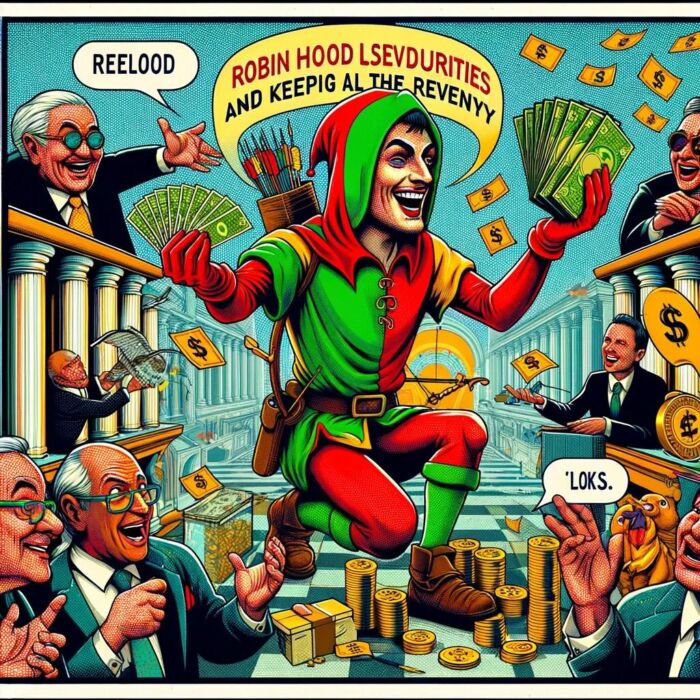
You know Robin Hood for example famously will lend your securities out and keeps all the revenue.
And we call them out on it and then finally they did a huge press release this fall or this summer.
But if you read the fine print they’re still keeping some (85) so that’s really just PR because we return all of it.
We don’t keep a single cent.
There’s like a little bit (maybe 10 to 20) that’s used to pay for just the corporate finance.
We don’t ever touch any of that and it goes straight to our admin.
But it’s an interesting idea because there are funds out there now that essentially have a negative expense ratio.
I don’t think a lot of investors appreciate or understand that reality.
But we’re pretty outspoken about it.
And we have a piece on our Cambria Funds website called “Securities Lending” if you want to dive in and check it out.
It’s a little wonky and esoteric but it gets deeper into the topic.
Investing Globally = Table Stakes “Base Case”
In 2022 investing globally should be the table stakes base case where you begin as a default.
If you want to be concentrated or invest more in a certain region go ahead.
If you want to market cap weight the world then sure that’s roughly half US.
And then it goes down the line from countries from there you end up with tens of thousands of stocks.
That’s an awesome portfolio and historically that does great.

Let’s call it eight, nine or ten percent a year after inflation.
It’s usually an awesome way to invest over time as being diversified globally is lower risk with lower volatility and drawdowns.
Investor Home Country Bias
But then why do people just invest in their own country?
We call this home country bias.
We talk a lot about it and it happens everywhere.
You know, it’s our Japanese friends investing mostly in Japan equities and the same goes for Chinese, Russian, Greek, Spanish, Colombian and Argentine investors.

Investors do it for a number of reasons.
I think part of it is a false sense of security.
They feel like they invest in what they know and there’s a whole host of other reasons.
We often tell people why not start with the inversion.
You know people always say, “Meb, why should I invest in foreign stocks?”
I’ve said let’s start with the exact opposite.
Why should you invest in US stocks?

Why not just invest all in foreign stocks?
And no one of course does that.
But historically it makes very little difference where the stocks/companies are based.
We often tell people (and we did a tweet about this that you probably saw) where a US based investor theoretically owned no US stocks.
And how does that change performance?
It makes very little impact to a global portfolio and that surprises people.

What Matters Most: Not Where But What Stocks You Own
And so we say what is far more important for a portfolio is not where the stocks are from but what the stocks are.
If you move away from these market cap weighted indexes to things like value (like a Warren Buffett style) you invest in stocks that have good cash flows that are cheap that treat shareholders well through dividends and buybacks.
They’re not super leveraged; they’re high quality businesses.
Surprise, surprise!
That’s a much better concept than just focusing on borders.

This is our shareholder yield idea.
We have three funds that do this: US, Foreign and Emerging markets funds.
They’ve all performed great and we more importantly think they have their best days ahead of them because of the value spread.
A lot of people talk about this publicly between cheap and expensive stocks.
I think you’ll see it probably a similar analog going forward and you’ve had a couple nice years of value performance already 2021 and 2022.
But my opinion (and again I’m a quant so it really doesn’t matter what my opinion is), is that I think this value trade has some room to run.

Seasons: Investing Styles and Strategies
I think this year is a good example where investing styles and strategies go through seasons.
This year the example I’m giving is that traditional investments (stocks and bonds) are down and an asset class that has been maligned for a long time (commodities) is having a much better year.
You realize markets have seasons.

There’s times when value looks really stupid (which has to sort of be the case) otherwise everyone would go out and do it.
And you know the the value premium would probably never be there.
But there also has to be times when you know the growth expectations go to the moon and everyone is expecting that world to extrapolate forever.
Well, that’s probably the time you should get your wits about you and and transition to value investing.
But we at least, historically speaking, think it certainly has a way to go from here.

Human Capital and Your Portfolio
Every investor should be honest about (and most I think are not as they actually do the exact opposite of what they should do) by thinking about your human capital and how that relates to your portfolio.
For example we could look back assuming you’re in the energy industry and you live in Texas while working at a company called Enron.
And then you invest all of your 401k or retirement into Enron stock.
Now in retrospect you say, “Wow! What a dumb idea. Why would anyone do that?””
But many people do.
Similar to home country, you go out and ask someone around the world currently in Russia, China, Greece or Brazil, was it a good idea to invest all of your money in stocks of your own country?
And they would say, “Hell no!”

But then you look at people within the US and Texans invest most of their portfolio with a big overweight tilt to energy, whereas Californians are sizably overweight to technology.
People in the northeast are biased towards financials.
You can’t make this stuff up.
Why on earth are you doing that?
That’s crazy.
You should do the exact opposite.
Not Mucking Up A Well Thought Out Investing Plan

I think there’s two.
I think one is curiosity.
For most of the strategies we talk about the biggest personality trait is a willingness not to muck around with the portfolio once you’ve set it up.
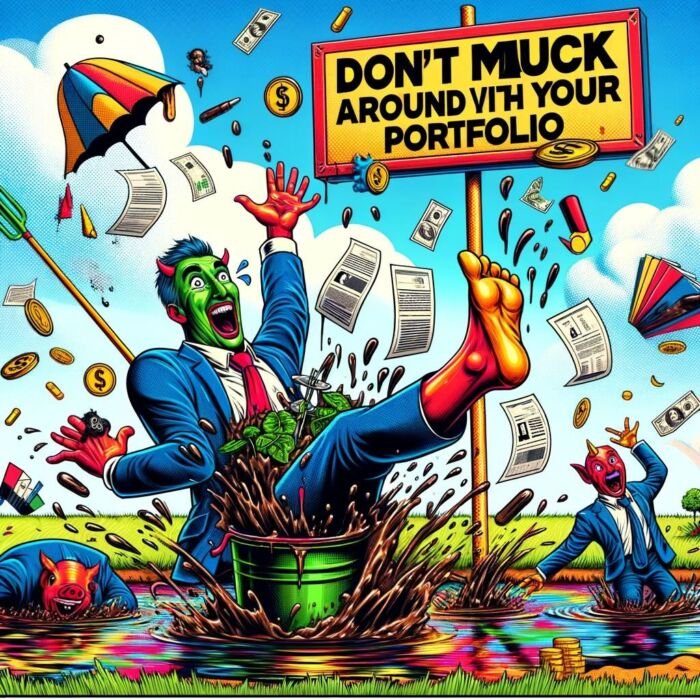
To do that you need to have an appreciation for history.
Most people skip the appreciation for history part so they get surprised when things happen.
A good example is we did a Twitter poll about what’s the most a traditional 60/40 portfolio has ever declined?
And most people think it’s like 10% whereas the answer is over 50%.
And so what happens is if you don’t know your history and you have a 60/40 and you think it’s a moderate or conservative portfolio.
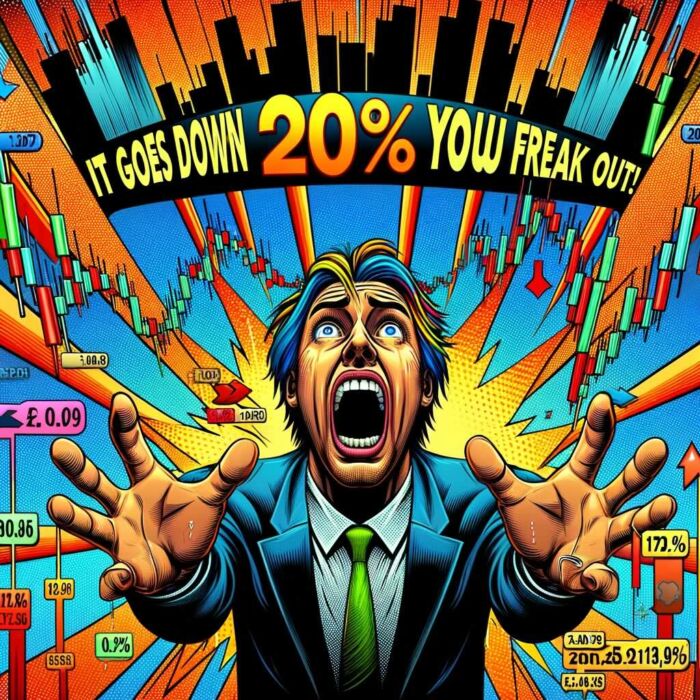
And then it goes down 20% and you freak out.
That’s the problem.
It’s not that your portfolio was poorly designed.
It’s not that you didn’t set it up the right way.
It’s that you didn’t really understand what could happen.
Now you go down 20 percent and it doesn’t mean that it’s any less painful.
Even if you’re aware of what is happening it’s still painful.
But at least you know that it was possible.

Importance Of A Written Investment Plan
The vast majority of investors don’t have a written investing plan and they should.
The same way you might want to have a written sheet for a diet or exercise plan.
And that way you can kind of keep yourself honest or at least have a framework and foundation to which to compare it to.
You become emotionally attached to something as soon as you buy it.
It doesn’t matter if it’s a coffee cup or an old used car or a stock.
Your physiological relationship with that object changes.
If you don’t establish why you’re going to sell something (and this doesn’t just apply to the bad times) if it goes down 10, 20 or 30%, do you add more?
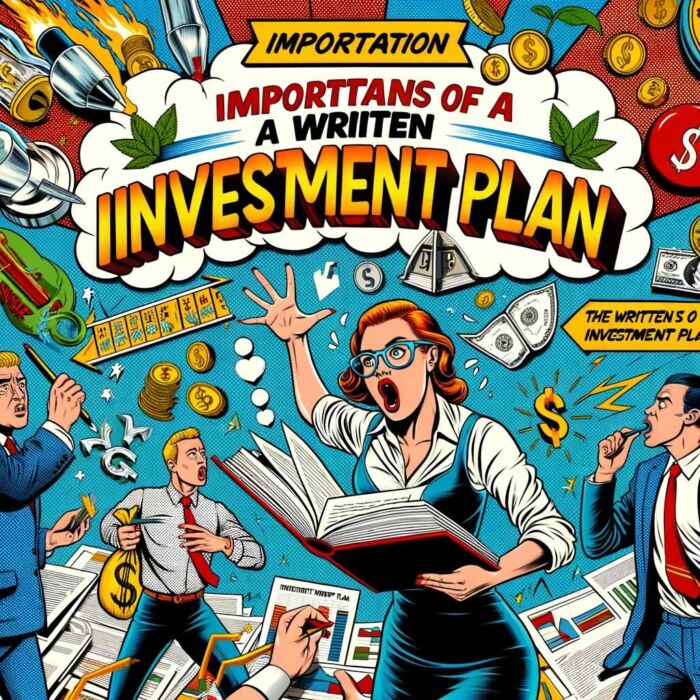
Do you sell it?
What’s your plan?
But also consider the upside.
You buy an investment and it doubles.
What are you going to do?
You buy an investment and it goes up 10x.
10 times your money.
It becomes a bigger part of your portfolio.
Let’s say you hit the lottery and you invest in a hundred bagger.
Do you trim some?
Do you do nothing in hopes that it becomes a thousand bagger?
Life-changing wealth.
I think these are situations that you should think about ahead of time to play through your head.
A good example certainly is crypto because that just literally is a number going up and down for most people.

They’ve been through the emotional rollercoaster of the past few years.
It’s harder than most would think.
Writing it all down while trying not to be too judgmental about yourself (a lot of people beat themselves up about what happens after the fact) is useful to help get through these experiences ahead of time.

Foreign and Emerging Markets Opportunities
Most investors don’t believe you could construct a portfolio that owns zero US stocks and do just fine.
You should invest globally because it reduces your outlier outcomes both good and bad.
But that’s not the right question.
The right question is not where are the stocks located because today you have stocks located in the UK but they have all their sales in South America.
Or you have a company that’s in a US index that doesn’t even have US sales.
An awful way to invest (an absolutely atrocious way to invest) is buying expensive stocks.
And that’s always been true but there’s times when it’s not true for a year or two and they go crazy.
If you have a global approach of go anywhere and you find quality companies trading at cheap valuations (with a lot of cash flows while also treating their shareholders well) how can you go wrong?
A lot of the Foreign markets and particularly Emerging markets are really cheap.
That’s the good news.
I love ending on a positive note.
Foreign and Emerging markets are a lot cheaper than US stocks.

Follow Meb Faber Across All Platforms
Website: MebFaber.com
Funds: CambriaFunds.com
Twitter: @MebFaber
YouTube: The Meb Faber Show
Other: TheIdeaFarm.com
I really appreciate Meb taking the time to participate in this series!
That’s all I’ve got.
Ciao for now.
Important Information
Comprehensive Investment Disclaimer:
All content provided on this website (including but not limited to portfolio ideas, fund analyses, investment strategies, commentary on market conditions, and discussions regarding leverage) is strictly for educational, informational, and illustrative purposes only. The information does not constitute financial, investment, tax, accounting, or legal advice. Opinions, strategies, and ideas presented herein represent personal perspectives, are based on independent research and publicly available information, and do not necessarily reflect the views or official positions of any third-party organizations, institutions, or affiliates.
Investing in financial markets inherently carries substantial risks, including but not limited to market volatility, economic uncertainties, geopolitical developments, and liquidity risks. You must be fully aware that there is always the potential for partial or total loss of your principal investment. Additionally, the use of leverage or leveraged financial products significantly increases risk exposure by amplifying both potential gains and potential losses, and thus is not appropriate or advisable for all investors. Using leverage may result in losing more than your initial invested capital, incurring margin calls, experiencing substantial interest costs, or suffering severe financial distress.
Past performance indicators, including historical data, backtesting results, and hypothetical scenarios, should never be viewed as guarantees or reliable predictions of future performance. Any examples provided are purely hypothetical and intended only for illustration purposes. Performance benchmarks, such as market indexes mentioned on this site, are theoretical and are not directly investable. While diligent efforts are made to provide accurate and current information, “Picture Perfect Portfolios” does not warrant, represent, or guarantee the accuracy, completeness, or timeliness of any information provided. Errors, inaccuracies, or outdated information may exist.
Users of this website are strongly encouraged to independently verify all information, conduct comprehensive research and due diligence, and engage with qualified financial, investment, tax, or legal professionals before making any investment or financial decisions. The responsibility for making informed investment decisions rests entirely with the individual. “Picture Perfect Portfolios” explicitly disclaims all liability for any direct, indirect, incidental, special, consequential, or other losses or damages incurred, financial or otherwise, arising out of reliance upon, or use of, any content or information presented on this website.
By accessing, reading, and utilizing the content on this website, you expressly acknowledge, understand, accept, and agree to abide by these terms and conditions. Please consult the full and detailed disclaimer available elsewhere on this website for further clarification and additional important disclosures. Read the complete disclaimer here.










Wonderful site you’ve created, Sam! It’s honestly more enjoyable to read personal experiences from those who aren’t experts. Okay, you’re not a professional investor or financial advisor. So what? It’s more helpful (and entertaining) to learn from others’ real-life experiments. Keep up the great work!
Cheers,
Cubert
Thank you very much Cubert! That’s really encouraging to hear!